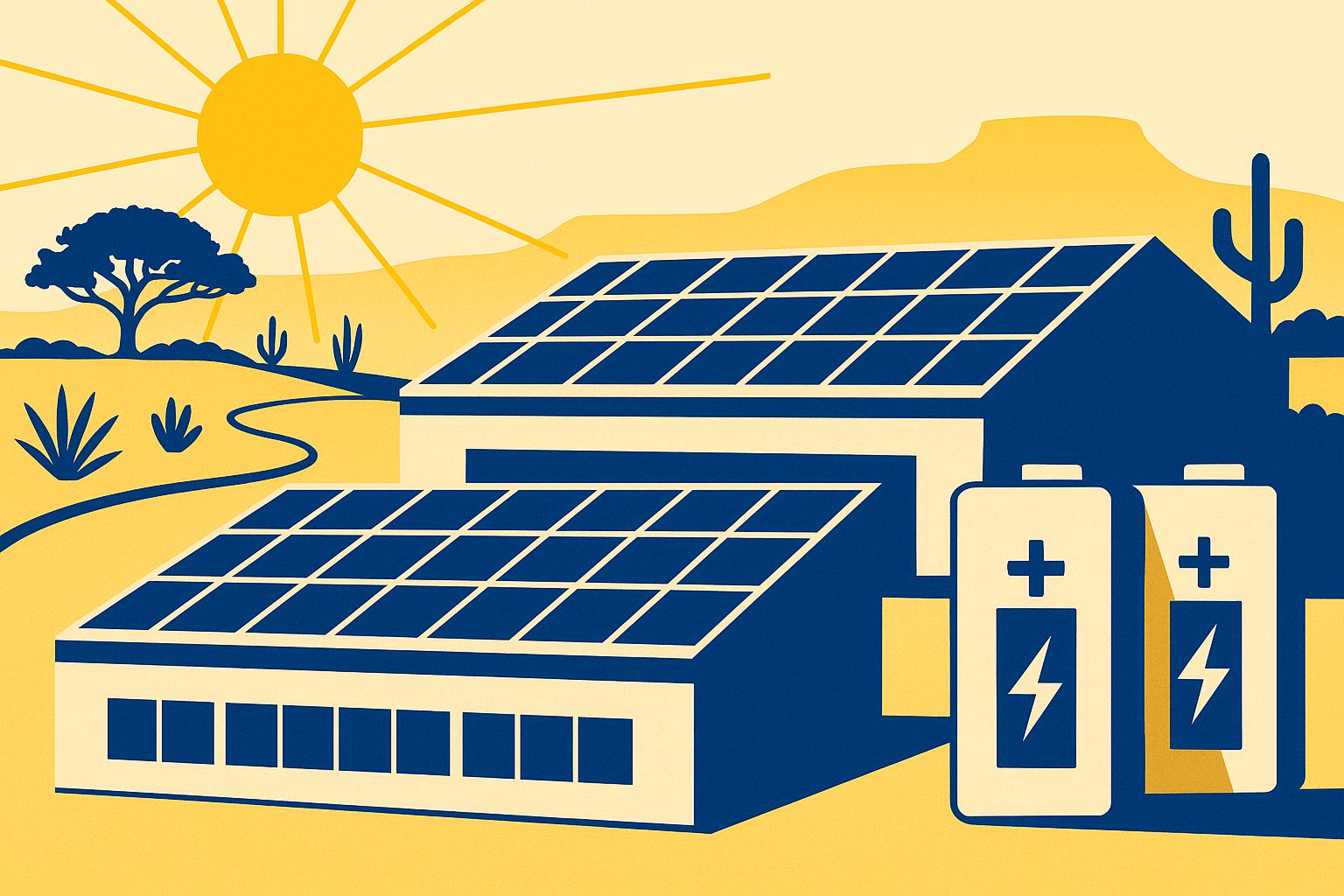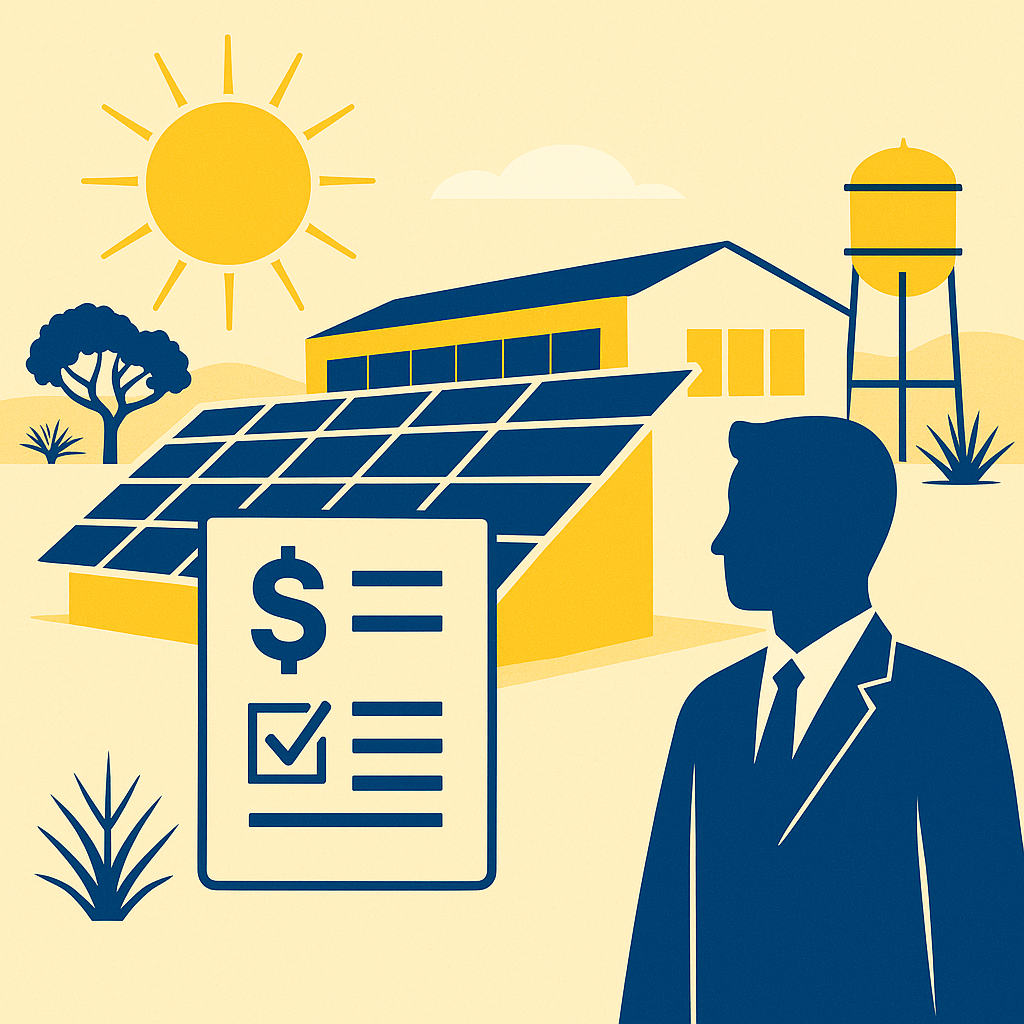
1. Understanding How Texas Utilities Bill for Demand
Not all electricity providers in Texas handle demand the same way. Depending on whether your facility is served by a Retail Electric Provider (REP), Municipally Owned Utility (MOU), or Electric Cooperative (Co-op), the structure of your bill may differ.
- When demand is built into the kWh rate:
If your demand costs are blended into your total energy charge (for example, $/kWh), then solar will directly lower your total energy consumption from the grid and reduce the demand component as well. - When demand is billed separately in kW:
Some utilities measure the peak kilowatt (kW) demand each month or billing period and apply a separate charge. In these cases, solar can still help, but only if the solar generation profile aligns with your facility’s peak demand times.
2. Matching Solar Production to Peak Demand
Manufacturers often experience peak demand in the mid to late afternoon, when equipment, HVAC systems, and production lines are all running at full capacity.
If solar generation during that window is strong, your system can shave your peak load and lower your demand charges. However, on cloudy days or during production peaks that occur after sunset, solar alone may not fully offset demand spikes.
That is where energy storage comes in.
3. How Battery Storage (BESS) Enhances Demand Savings
Many Texas manufacturers are now pairing Battery Energy Storage Systems (BESS) with their solar arrays.
Here’s how it works:
- During the day, the solar system generates power and charges the battery.
- When demand starts to rise, such as late afternoon or during production surges, the battery discharges stored power.
- This reduces the facility’s grid draw at the peak moment, lowering the kW demand used to calculate monthly charges.
Because demand charges often remain fixed for an entire billing cycle, even a short reduction in peak load can produce year-round savings.
Big Sun Solar specializes in solar plus storage designs that analyze your facility’s load profile, predict peak hours, and optimize battery dispatch to maximize demand charge savings.
4. Demand Charge Savings Across Texas Markets
- ERCOT-competitive markets (REPs): Demand often varies by contract and can be mitigated with the right solar and battery configuration.
- Municipal Utilities (like CPS Energy or Austin Energy): Structured tariffs with identifiable peak windows are ideal for solar demand reduction.
- Co-ops: Increasingly offering demand-based rates where solar and storage can play a major role in reducing operational costs.
Big Sun Solar’s engineering team regularly models these rate structures to ensure each project is tailored to the specific utility and load profile.
5. The Bottom Line
Solar can absolutely lower demand charges for Texas manufacturers, but success depends on how your energy provider structures those charges and how well your system is designed to match your load profile.
When paired with battery energy storage, solar becomes a powerful tool for demand management, energy cost control, and operational resilience.
Ready to evaluate your facility’s demand savings potential?
Contact Big Sun Solar for a customized solar and storage analysis designed to reduce your peak demand and maximize your ROI.















.png)


